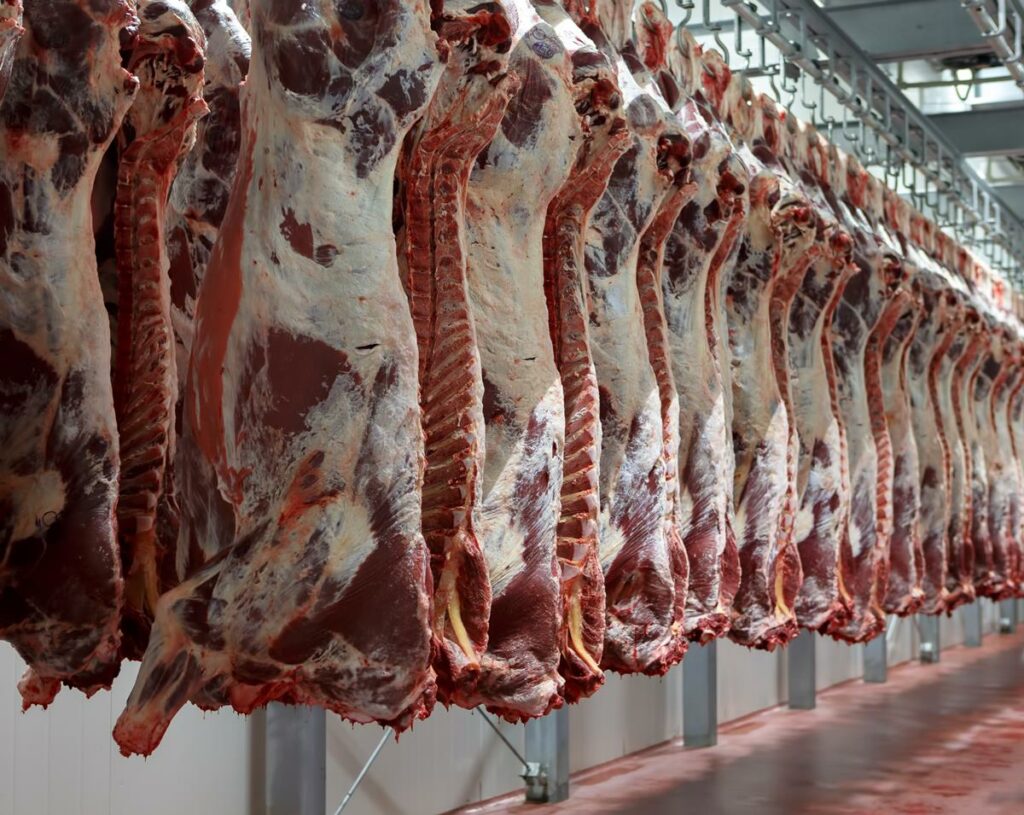The demand for beef remains strong and buyers are continuing to hunt for in-spec cattle. Due to this, farmers have been urged to dig in their heels and bargain hard when it comes to marketing their stock.
For the most part, factory base quotes have remained unchanged. Most processors are currently offering 410c/kg for steers and 420c/kg for heifers.
However, as supplies continue to tighten, some processors are now operating off base quotes of 415c/kg for bullocks and 425c/kg for heifers.
Farmers – especially those with large numbers of in-spec stock to sell – are finding that 5c/kg on top of the base quotes is achievable.
During negotiations, farmers should look for concessions on transport charges, age limits and carcass weights.
During the week ending May 6, in-spec, R+3= heifers made a top price of 445.21c/kg, while the average price paid stood at 440.57c/kg.
Cows
Buyers are offering 330-340c/kg to purchase P-grade animals. In addition, procurement managers are starting negotiations with farmers for O-grade and R-grade cows at 350c/kg and 360c/kg respectively.
However, there are a number of factors dictating cow quotes. The quality and grades of cows being presented and the location and demand of individual processing plants all have an impact on the prices achieved.
The weekly kill
For the third consecutive week, cattle supplies have decreased. Figures from the Department of Agriculture show that during the week ending May 6, some 30,984 head of cattle were slaughtered.
Some 3,500 young bulls were slaughtered in Department of Agriculture approved beef plants during the week ending May 6. This was an increase of 255 head or 7.8% on the week before.
Heifer and cow throughput has declined with supplies down by 450 head and 21 head respectively; heifer throughput stood at 8,765 head, while 7,098 cows were processed. In addition, the number of aged bulls processed fell by 96 head on the previous week’s kill.
Moving to steer throughput, supplies of these animals also decreased during the week ending May 6; throughput fell by 833 head or 7.0%.
The 2018 kill
Moving to the cumulative beef kill, just under 600,000 cattle have been slaughtered in Ireland so far this year. Figures taken from the Department of Agriculture’s beef kill database show that some 599,745 cattle have been slaughtered up to the week ending May 6.
When compared to the corresponding period in 2017, that’s an increase of 22,921 head or 4.0%.
Some 204,154 steers have been slaughtered in approved beef export plants. However, steer throughput is behind on 2017 levels; 369 fewer bullocks have been slaughtered this year.
The total number of heifers processed so far this year stands at 172,829 head. This is an increase of 8,250 head on the number of heifers processed in 2017.
In addition, the demand for manufacturing beef has driven the cow kill. Some 125,186 cows have been slaughtered up to the week ending May 6, 2018. That’s an increase of 7,166 head on the corresponding period in 2017.
Furthermore, there has been an increase in the number of aged bull and young bull slaughterings. Aged bull throughput has jumped by 1,514 head and young bull numbers are up by 3,912 head.
- Young bulls: 79,024 head (+3,912 head or +5.2%);
- Bulls: 10,409 head (+1,514 head or +17%);
- Steers: 204,154 head (-369 head or -0.1%);
- Cows: 125,186 head (+7,166 head or +6.1%);
- Heifers: 172,829 head (+8,250 head or +5.0%);
- Total: 599,745 head (+22,921 head or +4.0%).


